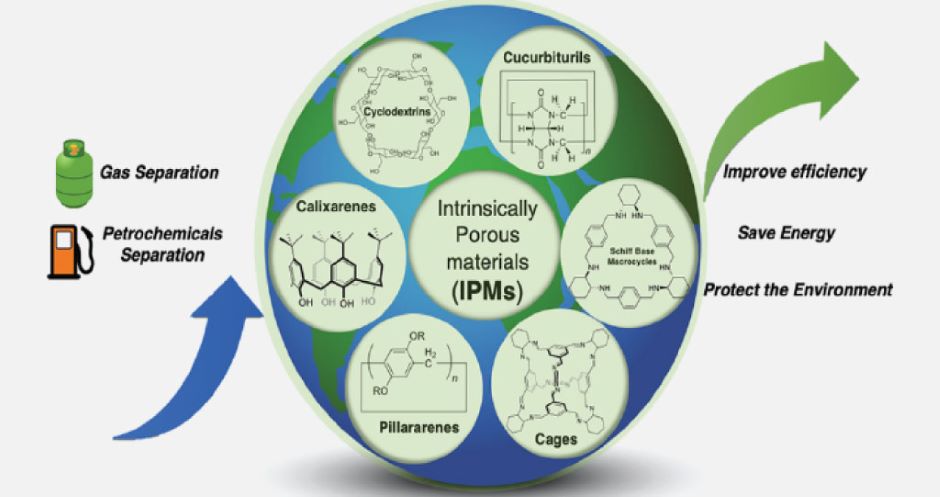
IPM materials, which can separate gases and liquids without using traditional high-temperature methods like heat-driven distillation, have been reviewed by Niveen Khashab and her team at KAUST in Saudi Arabia and their findings are published in Accounts of Chemical Research.
"Through the review, we identified some IPMs with impressive performance," said Gengwu Zhang, a postdoc in Khashab's team. In a statement, he said IPMs could save 70 to 90 per cent of the energy costs of existing technologies used by chemical and petrochemical industries.
According to KAUST, a key advantage of IPMs over many other porous materials is their stability and ability to maintain their porous properties in the solid, liquid, gas or solution states. They can also be readily processed and modified when in solution, unlike many alternatives.
"They can be easily prepared on a large scale by using cheap starting materials," said Zhang, "Some of them are even commercially available products."
IPMs have diverse chemical structures, but they share the property of being permeated with pores that have sizes and chemical natures that make them suitable for separating and purifying different molecules. The structure of the pores determines which chemicals they can selectively adsorb, block or allow to pass through.
The KAUST authors reviewed the state of research into several IPMs, ranging from large individual molecules with internal pores to giant assemblies of molecules held together by weak multimolecular interactions.
The most promising IPMs identified in the review include the chemicals cyclodextrin, cucurbiturils, pillararenes, trianglamines and porous organic cages (POCs). Cyclodextrins are ring-like carbohydrate structures produced from natural starch. The other compounds are specialised products of synthetic organic chemistry. The potential of these materials has been demonstrated by their performance in separating common industrial gases and liquid derivatives of the central industrial chemical benzene.
The KAUST team will now address the challenge of scaling up their own work on IPMs. To this end, discussions have started with Aramco for a pilot plan for liquid separations that should begin this year.





Nanogenerator consumes CO2 to generate electricity
Whoopee, they've solved how to keep a light on but not a lot else.